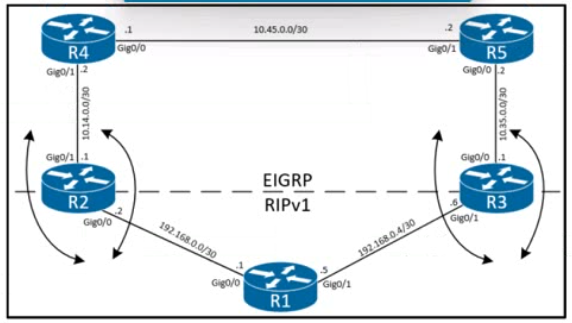Cisco 300-420 - Designing Cisco Enterprise Networks (ENSLD)
Which function do reverse path forwarding mechanisms perform in a multicast deployment?
Since installing a cisco TelePresence system, the company is experiencing other application having response issues when the system in use. As a result, the company asked an architect to recommend a QoS solution. The customer is currently using a CBWFQ policy to manage traffic on an internet connection with a speed of 100 Mbps. Which link-capacity limit must the architect choose for strict-priority for the real-time traffic?
In a Cisco SD-Access fabric, switch node Is equivalent to an access layer switch In a traditional three-tier campus network design?
In the SD-WAN underlay network, which WAN Edge VPN ID is defined as the transport VPN and is used to
carry control traffic?

Refer to the exhibit. An engineer Is designing a redistribution solution for a customer. The customer recently acquired another company and decided to integrate the new network running RlPv1 with the company's existing network. Which redistribution technique must the engineer select to ensure the multipoint two-way redistribution does not cause routing loops?
An engineer must propose a solution for a campus network that includes the capability to create multiple Layer 3 virtual networks. Each network must have its own addressing structure and routing table for data forwarding. The solution must be scalable to support hundreds of virtual networks and allow simple configuration and management with minimal administrative overhead. Which solution does the engineer recommend?
An engineer must connect a new remote site to an existing OSPF network. The new site consists of two low-end routers, one for WAN, and one for LAN. There is no demand for traffic to pass through this area. Which area type does the engineer choose to provide minimal router resources utilization, while still allowing for full connectivity to the rest of the network?
A customer with an IPv4 only network topology wants to enable IPv6 connectivity while preserving the IPv4 topology services. The customer plans to migrate IPv4 services to the IPv6 topology, then decommission the IPv4 topology. Which topology supports these requirements?
A router running ISIS is showing high CPU and bandwidth utilization. An engineer discovers that the router is configured as L1/L2 and has L1 and L2 neighbors. Which step optimizes the design to address the issue?
How is end-to-end microsegmentation enforced in a Cisco SD-Access architecture?



